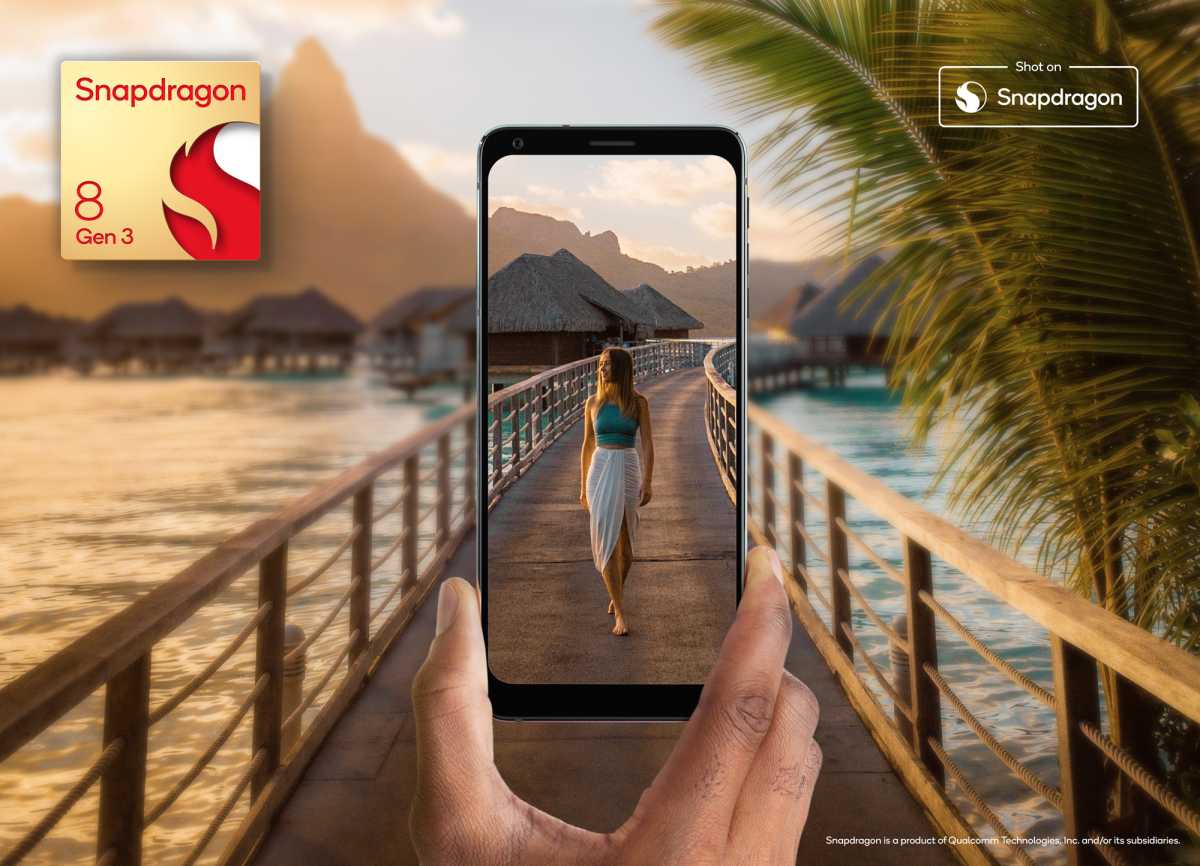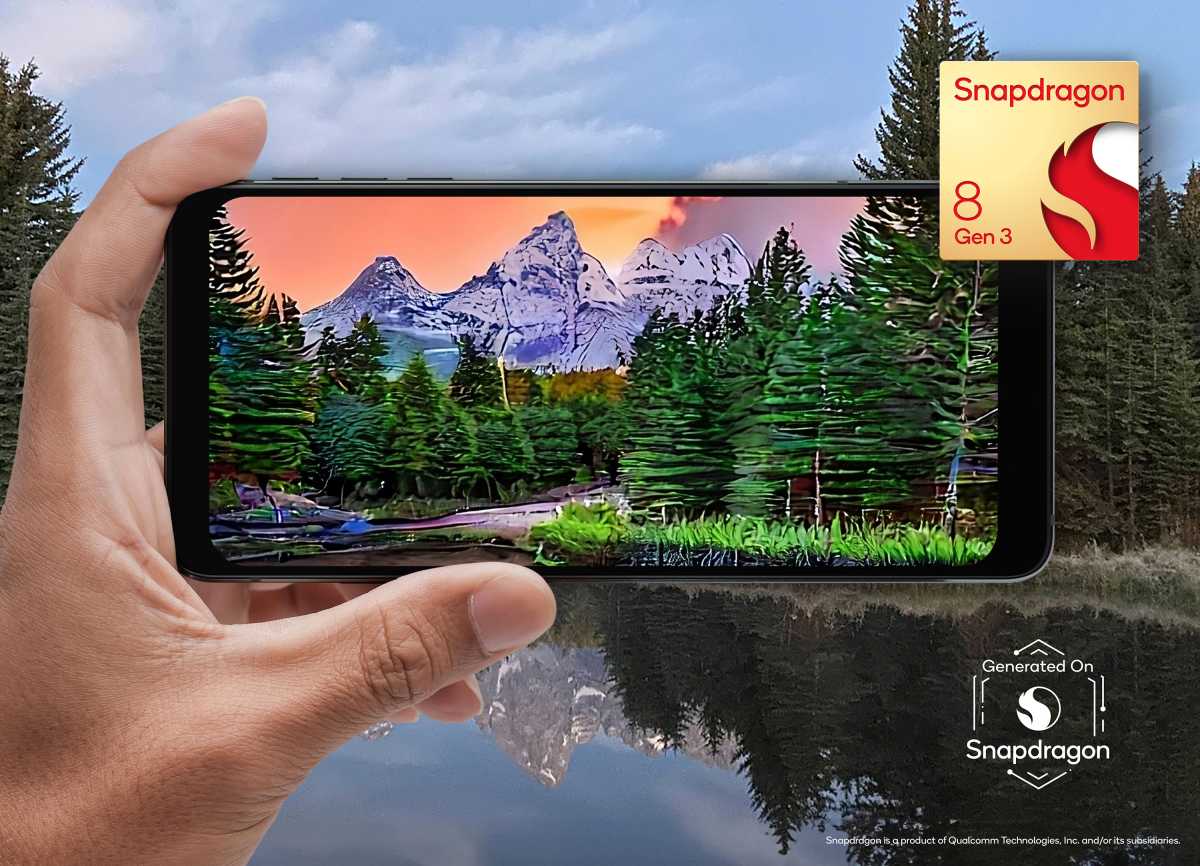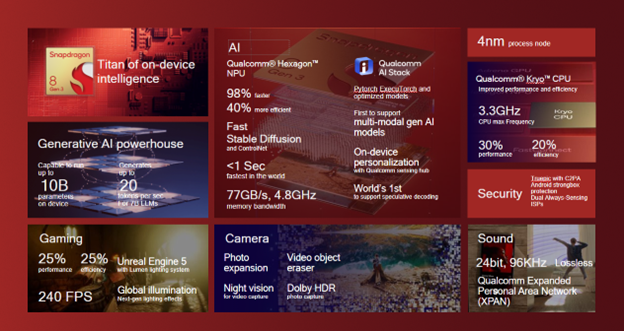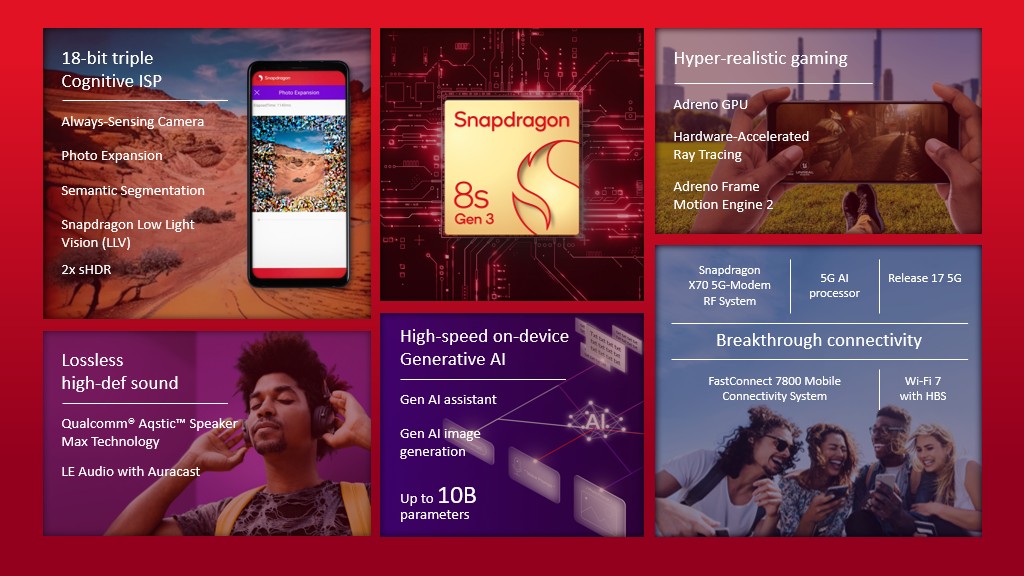When it comes to Android chipsets, Qualcomm is the leading name.
The company makes processors for Android phones of almost all budgets, though its flagship SoC (System on a chip) gets most of the attention.
That’s certainly been true of the Snapdragon 8 Gen 3, which launched in 2023 and has gone on to be included in a variety of high-end smartphones.
However, Qualcomm has since announced an alternative, known as the Snapdragon 8s Gen 3, which is designed for mid-range devices instead. Here’s everything you need to know about both chips.
When will the first Snapdragon 8 Gen 3 phones launch?
Qualcomm unveiled the Snapdragon 8 Gen 3 at its Snapdragon Summit in Hawaii on 24 October 2023.
It made its debut on the Xiaomi 14 series, when those phones were unveiled in China just two days later. The chip has since gone on to be included in lots of flagship Android phones, including the Samsung Galaxy S24 series, OnePlus 12, Honor Magic 6 Pro and Asus Zenfone 11 Ultra.
A new version of this chipset, known as the Snapdragon 8s Gen 3, was then announced on 18 March 2024. It’s designed for upper mid-range devices.
No specific phones running this chipset have been revealed yet, but Qualcomm says this will begin before the end of March. Honor, iQOO, Realme, Redmi, and Xiaomi will al be releasing Snapdragon 8s Gen 3 devices in the near future.
What are the Snapdragon 8 Gen 3 specs and features?
Let’s talk about both versions of the Snapdragon 8 Gen 3, starting with the regular, flagship chipset.
Snapdragon 8 Gen 3
The Snapdragon 8 Gen 3 uses 4nm process technology – not the 3nm that was rumoured and which Apple uses for it A17 Pro. Nevertheless, Qualcomm’s new chip delivers even better performance with its Kryo CPU and Adreno GPU.
The Qualcomm Kryo CPU, built on a 64-bit architecture, includes one Prime core that can reach speeds of up to 3.3 GHz. It employs Arm Cortex-X4 technology and incorporates five ‘Performance’ cores (up to 3.2 GHz) and two ‘Efficiency’ cores (up to 2.3 GHz). Compared to the Gen 2, the new chip offers 30% better performance and 20% power efficiency.
The Adreno GPU is 25% faster, 25% power efficiency, and a 40% improvement in Ray Tracing capabilities. These performance enhancements also come with 10% overall power savings, so you shouldn’t need to worry about battery life.
The 8 Gen 3 supports on-device display resolutions of up to 4K at 60Hz and QHD+ at 144Hz. It can also handle external displays with resolutions of up to 8K at 30Hz and 1080p at 240Hz, offering a versatile display experience.

Qualcomm
To improve mobile gaming performance, the chipset introduces Snapdragon Game Super Resolution, allowing to upscale game scenes to 8K on external displays. The Adreno Frame Motion Engine 2.0 also ensures even higher quality scenes with doubled frame rates, all while maintaining the same power consumption.
Not only gamers, but also photography enthusiasts will appreciate the Snapdragon 8 Gen 3’s capabilities.

Qualcomm
The Spectra Image Signal Processor has real-time Semantic Segmentation photo and video processing (supporting up to 12 layers). It supports high-resolution cameras, including 108-megapixel and 200-megapixel single camera options. This chipset also excels at HDR video capture, with the ability to capture 8K HDR video at 30 FPS, and 4K video at 120 FPS.
It promises far better photo and video editing experiences then before, along with voice-activated generative AI. Semantic Segmentation technology will allow the optimisation of different components of your shots in real-time, providing more detail, vibrancy, and authenticity. Even in low-light conditions, Night Vision video capture powered by AI should make a big difference.
The chipset also introduces features like Truepic photo capture with C2PA standard and the Video Object Eraser by Arcsoft for video capture, allowing you to remove unwanted elements from your videos with a simple tap.
And for creators, the Vlogger’s View feature enables you to share both your selfie camera and rear camera video simultaneously. Photo Expansion also help with intuitively extending photos beyond their original frame.
The Snapdragon 8 Gen 3 also showcases Qualcomm’s commitment to on-device generative AI.

Qualcomm
Its AI Engine supports multi-modal generative AI models, including large language models (LLM), language vision models (LVM), and transformer network-based automatic speech recognition (ASR) with up to 10 billion parameters—all running on-device.
One of the standout features is the ability to quickly generate images. The LLM models can also make your personal AI assistant more responsive. Additionally, the Snapdragon 8 Gen 3 allows for on-device personalisation through the Qualcomm Sensing Hub.
The chipset boasts up to 98% faster Qualcomm Hexagon NPU performance, as well as a 40% improvement in performance/watt. Furthermore, there’s up to a 3.5x increase in AI performance on the Qualcomm Sensing Hub.
Audio quality is another aspect where Qualcomm has made progress with the Snapdragon 8 Gen 3.
The Aqstic audio codec includes features like spatial audio with head-tracking, promising an immersive audio experience.
Snapdragon Sound with Qualcomm Expanded Personal Area Network Technology (XPAN) also promises uninterrupted lossless audio, whether you’re moving around or staying connected to your phone. The synchronisation of gameplay sound to the millisecond is another nice touch to provide zero lag from onscreen action to your earbuds.
The Snapdragon 8 Gen 3 also offers improved connectivity.
It comes equipped with the Snapdragon X75 5G Modem-RF System, which offers 5G Advanced-ready capabilities. It supports both 5G mmWave and sub-6 GHz, 5G standalone (SA) and non-standalone (NSA) modes, standalone mmWave, and mmWave-sub-6 dual connectivity. It also provides downlink speeds of up to 10Gbps and uplink speeds of up to 3.5Gbps.
The Qualcomm FastConnect 7800 also offers Wi-Fi 7 with peak speeds of 5.8Gbps. Additionally, Bluetooth capabilities include support for aptX Voice, aptX Lossless, aptX Adaptive, and LE Audio.
Its 5G modem with an integrated AI tensor hardware accelerator offers 2.5x AI processing power compared to its predecessor. It also supports 24-bit 96 kHz lossless music over Bluetooth wireless technology.

Qualcomm
Snapdragon 8s Gen 3
Qualcomm has introduced the Snapdragon 8s Gen 3 chipset in March 2024, positioned just below its flagship counterpart in both features and the expected price of device it’ll power. The 8s Gen 3 aims to make high-end features more accessible to mid-range phones.
The new chipset offers a GPU similar to the flagship model, the 8 Gen 3, but with slightly reduced performance cores and frequency. The main core runs at up to 3.0GHz versus 3.4GHz on the 8 Gen 3. It also incorporates the previous-gen X70 5G modem (though it still has Wi-Fi 7 support) and enables hardware-accelerated ray tracing for smoother gaming experiences.
What is most encouraging, however, is the fact that the chipset supports on-device generative AI models and large language models, even if they’re not as advanced as the Snapdragon 8 Gen 3.
This is likely to enable brands to implement advanced AI-based features into more affordable models, rather than being limited to flagship handsets, as is often the case currently.

Qualcomm
Some phone makers use older chipsets in their more affordable devices, but this may tempt them towards the Snapdragon 8s Gen 2.
Qualcomm’s tier system also now includes sub-categories, potentially leaving room for a future 8+ Gen 3. This is something that we’ve seen happen on past flagship chipsets.
Which phones use the Snapdragon 8 Gen 3?
Here’s the full list of the phones that feature with the main Snapdragon 8 Gen 3 and are available in the UK and/or US:
- Samsung Galaxy S24 (some markets)
- Samsung Galaxy S24 Plus (some markets)
- Samsung Galaxy S24 Ultra
- OnePlus 12
- Asus ROG Phone 8 Pro
- Asus Zenfone 11 Ultra
- Xiaomi 14
- Xiaomi 14 Ultra
- Honor Magic 6 Pro
- Motorola Edge 50 Pro
- Nubia Red Magic 9 Pro
Qualcomm says the Snapdragon 8s Gen 3 will be used by the following companies: Honor, iQOO, Realme and Xiaomi (including Redmi sub-brand). Devices are expected to be announced in the coming months, though none of those companies usually launch phones in the US.
If you need to buy a phone right now, take a look at our current picks of the best smartphones, along with the best upcoming phones.
Learn more about Qualcomm’s 2024 flagship phone processor, the Snapdragon 8 Elite.
